Law 31 on Accessory Dwelling Units
— A New Era of Housing in Quebec

For the past few months, Quebec’s new Law 31 has made it possible to add a secondary dwelling to a residential property. It’s a smart way to make the most of the land you already own, help ease the housing crisis by sheltering people you care about, and bring in some extra income at the same time.
Some cities, like Dunham, are even allowing detached tiny homes in people’s backyards.
In this article, we break down the legislative shift, the opportunities it opens up, and how to approach an ADU project in a healthy, smart, and efficient way.
At the end, we’re also sharing a list of grants and financial aid options that can help bring your construction or renovation plans to life.
Law 31 and the Bigger Social Picture
Imagine being able to house a loved one, earn some extra income, or expand your living space, but without the burden of buying a new plot of land.
For many, this dream is now within reach. With the new law in place, it’s not only doable, it’s financially viable and socially impactful.
Quebec’s housing crisis has been dragging on for years. Families are squeezed into tight quarters, rent prices are through the roof, and real solutions have felt out of reach.
Meanwhile, all across the province, thousands of family-owned lots could accommodate a secondary home, without disturbing a single hectare of forest or farmland.
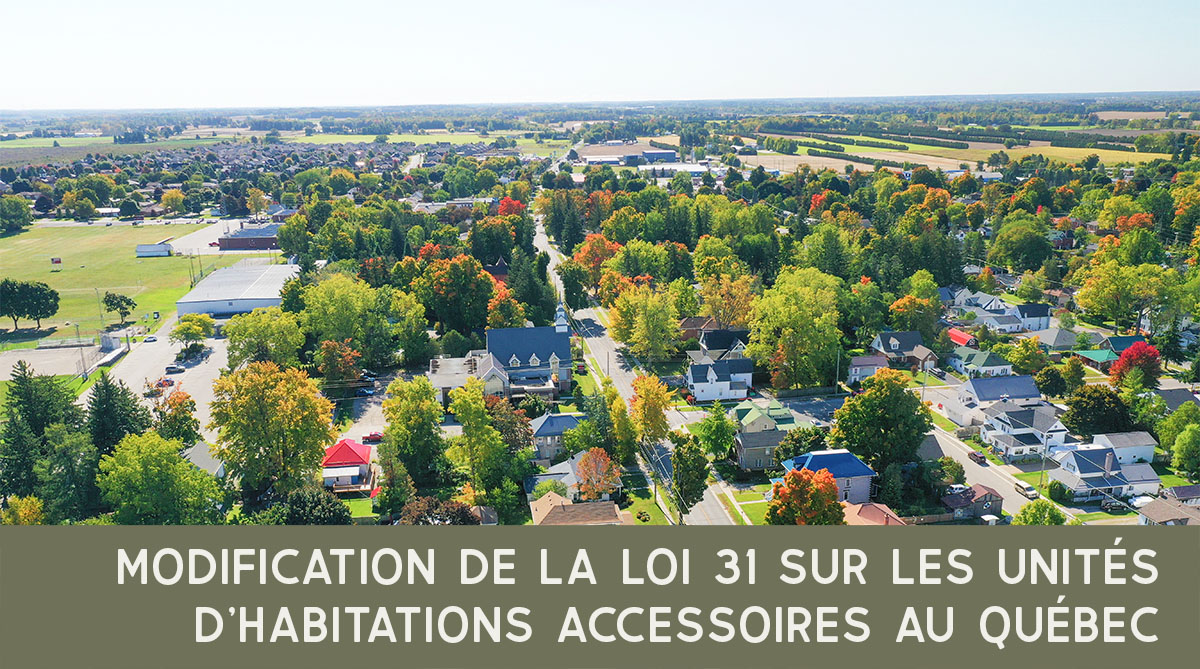
That’s the backdrop against which Law 31 was passed. It gives homeowners the right to build an ADU on their property, even in places where zoning laws would have previously blocked it. This is a rare window of opportunity, open until 2029, to meet both personal goals and broader societal needs.
The pressure is rising. Recent immigration waves, aging baby boomers, and young adults priced out of the market are all adding strain to an already tight system.
People are ready. They want to be part of the solution, and have more say over how they use their own land.
How does Law 31 Works and what does it Allows
Law 31 authorizes, until August 21, 2029, the addition of an accessory dwelling under certain conditions, even if local zoning previously prohibited it. Here are the key points to know:
- Typically, the accessory dwelling must be attached to or integrated into the main building (for example, an extension or a renovated basement).
- The main building must be a detached, four-season single-family home.
- The property must be located within an urbanization perimeter.
- It must not be in a constraint zone (such as a landslide or flood-risk area).
- Local rules still apply regarding appearance, architecture, parking, and landscaping.
In short: Law 31 isn’t a free-for-all, but it does remove a major roadblock.
It’s worth noting that each municipality retains some regulatory power to align implementation with their vision. That’s why some cities, like Dunham, are choosing to build on this temporary right with a long-term strategy.
Dunham: A Model City for Clear Guidelines

In February 2025, the City of Dunham updated its bylaws to allow both attached and detached accessory dwellings, an uncommon and bold move within Quebec’s housing landscape. Here’s a quick overview of the criteria for a detached ADU on the same lot as the main home:
- It must be built on the same lot as a detached single-family home.
- The footprint must be between 25 m² (269 sq. ft.) and 70% of the main building’s footprint.
- The lot must be at least 2,000 m² (21,528 sq. ft.) if serviced, or 5,000 m² (53,820 sq. ft.) if unserviced.
- It must be located in the backyard only, at least 5 meters away from the main building.
- Its height cannot exceed that of the primary home.
- The ADU cannot be used as a short-term rental (like Airbnb), but it can serve many purposes; for family, for yourself, or to support the local economy.
What matters here is Dunham’s vision: it sees ADUs as a smart planning tool to energize neighborhoods, diversify housing options, increase density without disruption, and improve the city’s financial health so that it can offer better services to its residents.
Other Cities Are Following Suit
Municipalities like Granby, Lanthier, Longueuil, Mont-Tremblant, Sainte-Catherine, and Victoriaville are also adopting or exploring similar approaches for tiny homes and ADUs. This is becoming a rising trend, supported by the Société d’habitation du Québec, which views ADUs as a key lever for urban resilience.
Financial Help for Caregivers and Families
Beyond this new flexibility, municipalities also now have the power to provide financial assistance when an ADU is occupied by:
- A family member of the primary resident
- A caregiver
The relationship must be officially documented, but this measure helps support households that choose to care for loved ones at home.
ADUs and Zoning: A Two-Step Dance
Law 31 doesn’t force municipalities to allow ADUs everywhere. Cities can limit them to certain zones, particularly in agricultural areas (which fall under CPTAQ jurisdiction). So it’s crucial to:
- Check the regulations in your municipality
- Review the urban planning documents
- Talk to an inspector or your local urban planning department
- Reach out to Artcan for personalized support in bringing your project to life
3. How to Make the Most of This Law and ADU Opportunities
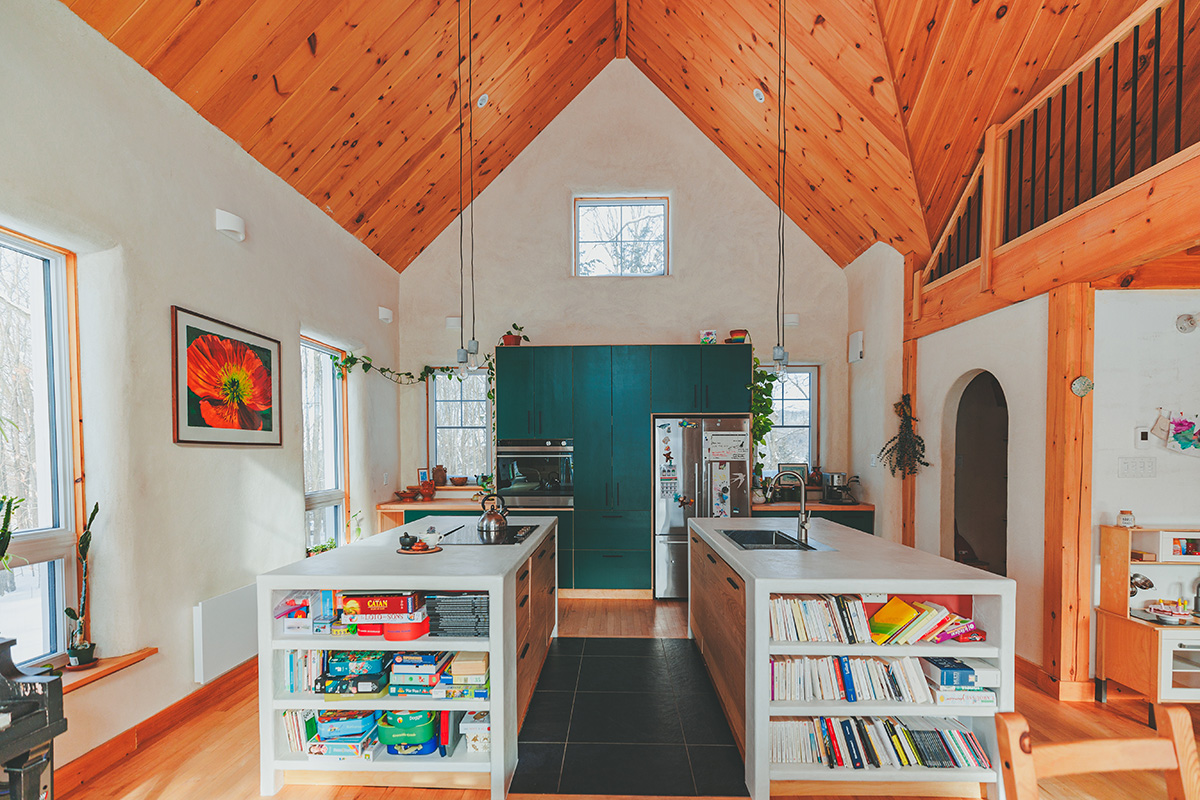
Law 31 opens the door to many new possibilities. Here are a few realistic and inspiring ways to use it, depending on your needs:
ADUs for Family
- A studio for a teenager seeking independence
- A suitable space for an aging parent, with or without medical care
- A guest unit for a relative staying for an extended visit
ADUs for the Local Economy
- An affordable rental unit for local residents
- A temporary home for a student or intern
- A modestly priced rental to support the local economy
ADUs for Yourself
- A home office for remote workers, entrepreneurs, or freelancers
- A creative studio for artists, makers, or crafters
- A personal retreat, a mini-cabin either in your own backyard or on a friend’s land in the Laurentians, Gaspésie, or the Eastern Townships
Some municipalities even allow mixed-use spaces (living + working), as long as everything complies with zoning regulations.
Now, why build it sustainably?
The moment you build small, you’re already reducing your environmental footprint. If you also choose materials that are healthy, long-lasting, and low-impact, your project will benefit not only the planet, but also everyone who lives in or around the space.
Law 31 is more than a zoning adjustment, it’s a chance to raise our standards for quality, durability, and beauty, and shift the housing culture in Quebec.
That’s where hemp comes in.
Smart investments examples to maximize your land’s potential
There are several practical ways to benefit from the new ADU-friendly legislation.
Renovate Your Basement Into a Rental
A renovation investment of about $60,000 can bring in $1,200/month in rent, that’s $14,400 per year (before taxes).
Build a detached ADU beside your main home
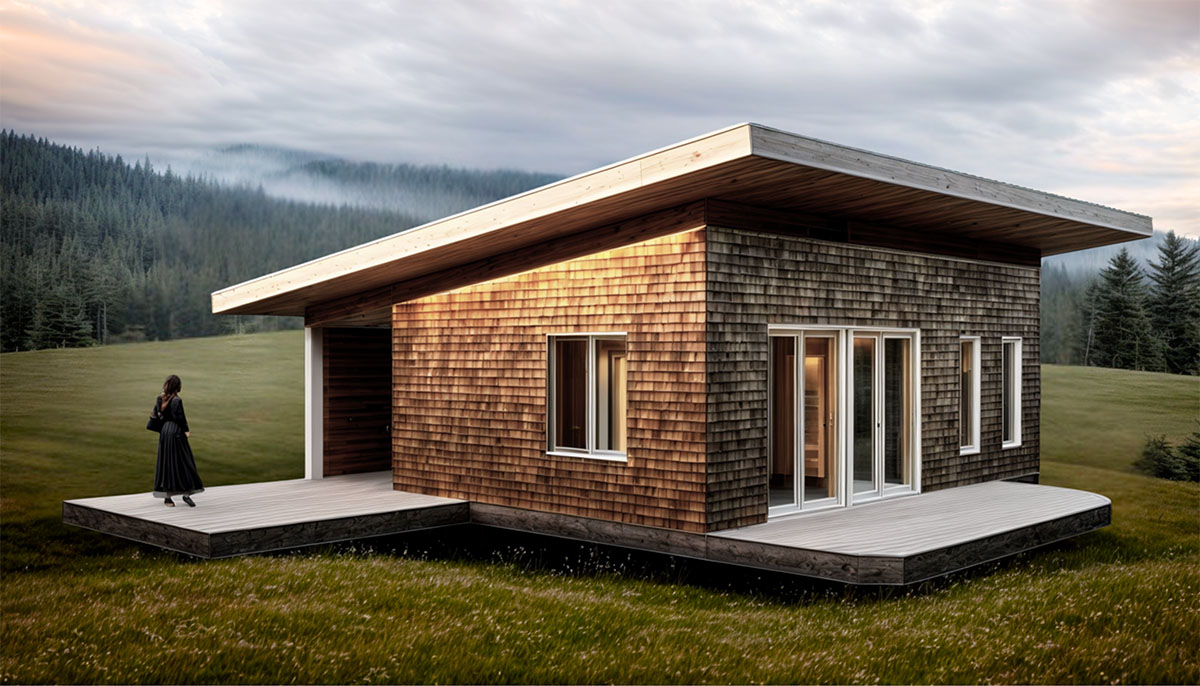
A turnkey prefab ecological tiny home like the Essencia model, available in Artcan’s prefab catalog, costs around $177,000.
This beautiful unit, rented for $2,000 per month, can generate around $24,000 in yearly income (before taxes).
You could recoup your entire investment in approximately 16 years, and that’s without factoring in the immediate boost to your property’s market value, which in some neighborhoods could exceed the ADU’s build cost.
You’ll also recover that investment (and possibly more) when you eventually sell your property.
The Essencia model, like all our prefab tiny homes, is a perfect example of sustainable building. Therefore you may also qualify for additional grant programs, making your investment even more advantageous.
Both options, renovating or building new, are profitable, accessible, and smart over the long term.
But choosing something like the Essencia offers more than just financial return. It adds instant revenue, a valuable asset, and preserves the space, privacy, and quality of life of your main home.
Bonus: since it’s prefab, the Essencia can be installed quickly and with minimal impact on your land, unlike traditional on-site construction.
Building with Hemp: The Perfect Match for ADUs

Hemp is one of the most promising bio-based materials for construction in Quebec:
- It’s non-toxic (no off-gassing or VOCs), and 100% natural
- It insulates well and provides excellent thermal mass, meaning energy savings and temperature stability
- It “breathes”, regulating humidity and preventing mold
- It’s incredibly durable; drawing inspiration from millennia of natural masonry, like in Rome, where buildings still stand strong after more than a thousand years!
- It has a negative carbon footprint (hemp absorbs more CO₂ than it takes to process), and it’s locally transformed
- It offers a clean, modern, natural aesthetic
Hemp can be used in various ways: poured hempcrete walls, hemp blocks, natural exterior finishes, or insulation paired with solid wood frames.
Why hemp is ideal for ADUs
Construction costs often reflect complexity. With ADUs, you can test out innovative, ecological materials on a smaller scale, while seeing immediate improvements in comfort and energy performance.
You could build a complete, ultra-comfortable home with 30% to 50% less environmental impact than a conventional building, while generating revenue and offering an exceptional living space. Not to mention the savings on electricity!
A personal project, a collective impact
Municipal regulations are evolving. Mindsets are shifting. Maybe you already have the land, the vision, or the need. Law 31 is your opening.
In the government’s land-use planning guide, we find these three goals:
- Objective 4.1 — Plan living environments with access to quality, affordable housing for all households
- Objective 4.2 — Optimize land use and public investments by focusing growth in urbanized areas
- Objective 4.3 — Ensure integrated planning of land use and transportation
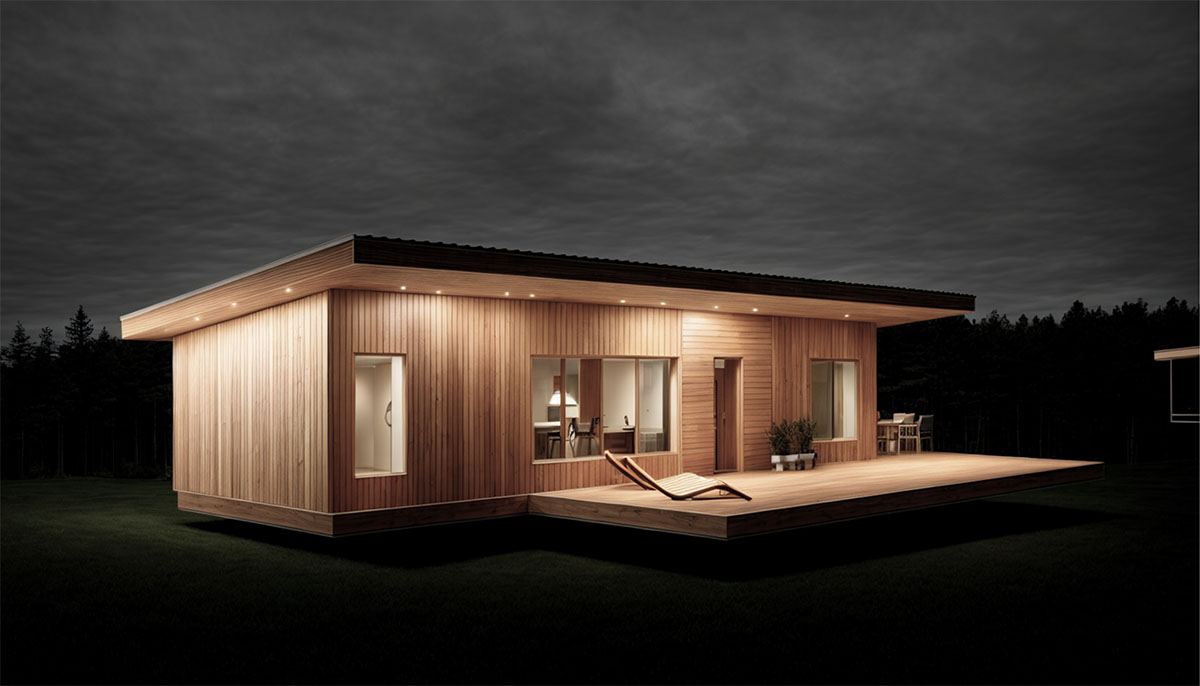
So what’s the next step? Build small. Build green. Build with purpose.
ADUs aren’t a trend. They’re the foundation of a more resilient future. A healthier, more accessible, more socially and environmentally conscious way to live. The gateway to more affordable housing might just be, in your own backyard! If you’ve got the space, and the spark of an idea, now’s the time to bring it to life. And if you need technical guidance, or inspiration for a hemp-based build, we’re here to help.List of financial assistance, grants, and funding to build or renovate your housing project

Novoclimat Program
This program provides financial support for buyers, contractors, and developers, depending on the type of residential building. It sets precise technical standards to follow during construction and includes training and certification components for professionals in construction and ventilation. Inspections are conducted during the build, leading to official certification for homes that meet the criteria.

Programs from the Société d’Habitation du Québec (SHQ)
The SHQ offers a wide range of financial aid programs tailored to different housing needs, from renovation and new construction to accessibility and community housing initiatives.

National housing co-investment fund — Repair and renewal
This program offers loans or financial contributions for the repair and upgrading of affordable, community, or mixed-use housing projects. It also applies to shelters and transitional housing.
National housing co-investment fund — New Construction
This fund supports the creation of affordable housing within mixed-income, mixed-use, accessible, and energy-efficient developments. It’s open to non-profits, co-ops, and the private sector. Eligible tenants pay rent equal to 25% of their income. Applications must be made through a local housing office, co-op, or non-profit organization.
https://www.cmhc-schl.gc.ca/fr/nhs/co-investment-fund—new-construction-stream
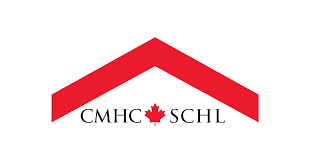
CMHC Rental construction financing
This Canada Mortgage and Housing Corporation (CMHC) program provides low-cost loans to support the construction of rental housing. Projects must meet affordability, energy efficiency, and accessibility standards.
AccèsLogis Québec (SHQ)
AccèsLogis supports the creation of community and affordable housing for low-income households or people with special needs. The program relies on partnerships between public, community, and private players. SHQ can fund up to 50% of eligible costs and can also guarantee a mortgage loan contracted by the promoting organization, often in tandem with CMHC funding.
https://www.habitation.gouv.qc.ca/programme/programme/acceslogis-quebec

Heritage property support program – Ministry of Culture and Communications (MCC)
This program supports regional governments and municipalities in documenting, protecting, enhancing, and passing down built cultural heritage. One section is specifically dedicated to the restoration of heritage buildings, whether privately or municipally owned.
Municipal Tax Credits and Grants (Articles 85.2 and 85.4 of the LAU)
Municipalities can offer tax credits and grants in targeted areas as part of urban revitalization initiatives:
- Article 85.2: Tax credit for properties located in areas where most buildings are over 20 years old.
- Article 85.4: Tax credits and grants for work done in downtown cores or areas designated by a Special Urban Planning Program (PPU).
Do you have an idea for a ADU? Now is the time to bring it to life!
And if you need technical advice or inspiration for building with hemp, we’re here to help.